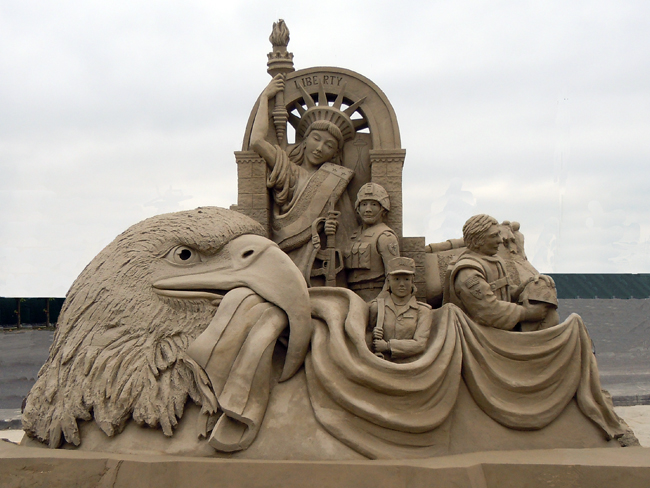Sculptor Michael Velling recently presented a lecture on “Sand Sculpting” as part of the Osher Lifelong Learning Institute’s Munch & Learn at Yavapai College.
A dentist by profession, Velling said he began sculpting sand in 1989 as a hobby, which then developed into an obsession and a second career. He recounted that after seeing the last day of a sand sculpting competition at the beach, he thought he could do it himself, so he went home, bought his first trowel and was carving within a week. A few weeks later, he started entering local contests and even attending a championship to explore the different possibilities.
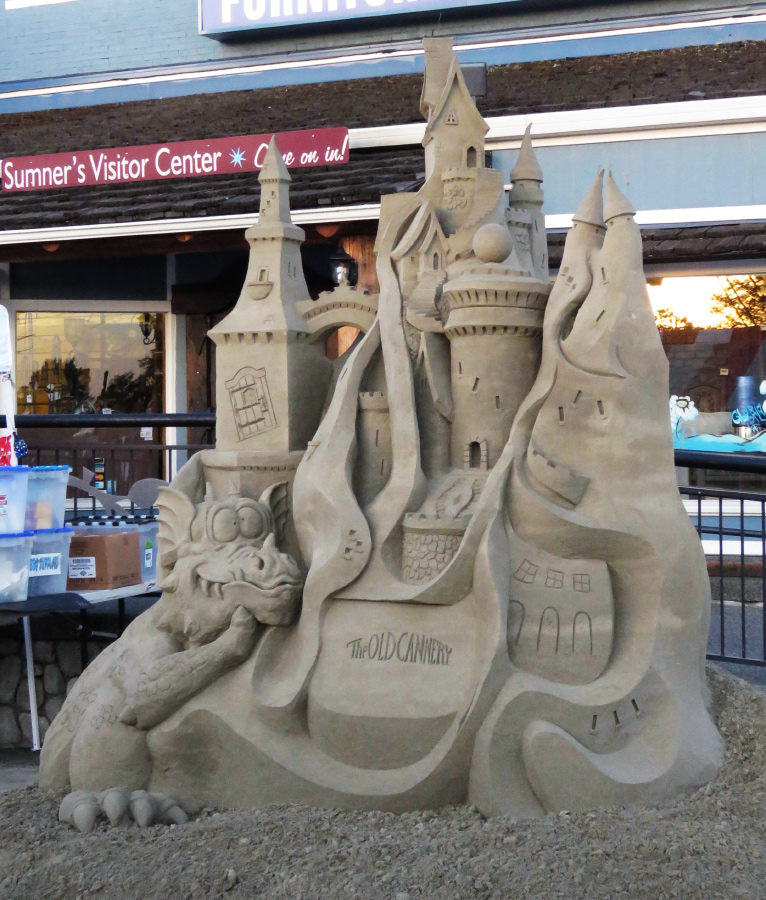
He presented a slideshow of some of his sand sculptures, starting with massive sand castles. One of the castles was pirate-themed to coincide with a release of a pirate movie, as Velling said many contest themes are movie-related. Another castle was designed with a Jack in the Beanstalk theme.
Sand sculpting contests have solo, doubles and team categories, and Velling often works with his wife Frances, who is an artist. To build a large-scale sand castle, they use wooden boxes as frames before piling and packing the sand to trap as much water as possible. The sand is carved while wet. Velling said he doesn’t use a level and has learned to sculpt freehanded. He uses tools from shovels to artists’ palette knives to carve, and straws to blow away excess sand.

Velling compared his work to performance art, as passersby often stop to watch him scuplt, or come back to his work site later to see how a sculpture is progressing.
When entering festivals, Velling said, artists are likely to be surprised by the designs they are challenged to execute. At the Festival of the Salmon, he ended sculpting a 22-foot salmon with an American Indian design. He usually sets up an area for kids to play with some basic tools when participating in a festival.
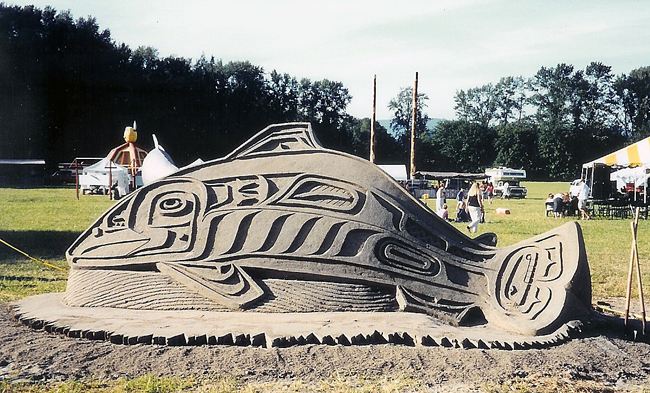
“It’s a lot of fun to watch what they come up with,” Velling said.
As a dentist, Velling admitted to focusing on the teeth in his sculptures, and said that his trade has helped him become a good carver by preparing him to have steady hands. One member of the audience asked if he used his dental tools for carving; Velling replied that he did not.
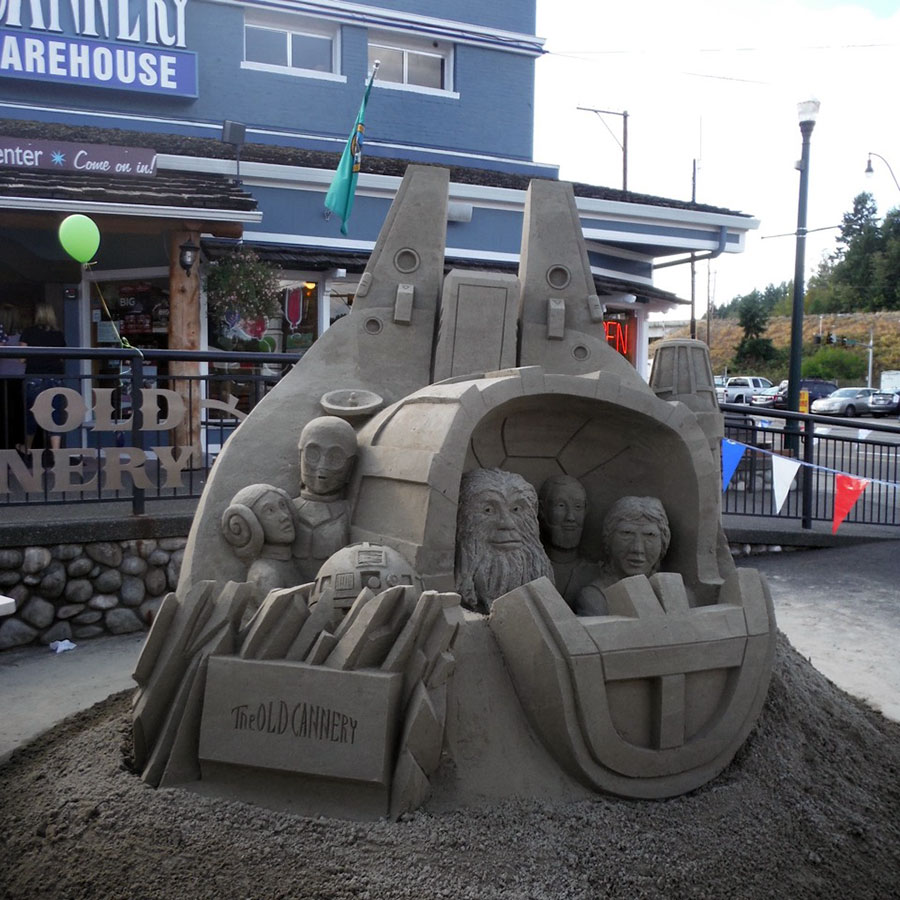
Many of Velling’s scultpures have been based on themes or slogans. He said about two thirds of his sculptures are planned, while one third have been spontaneous productions at the beach. He also participates in group carving events, such as recreating the Canadian parliament buildings as part of a festival held in Quebec each year.
“It’s a lot of hard work,” Velling said. He estimated that they usually dig about one cubic square yard per sculptor per hour. If working solo, he moves about a truckload of sand on the first day of an event.
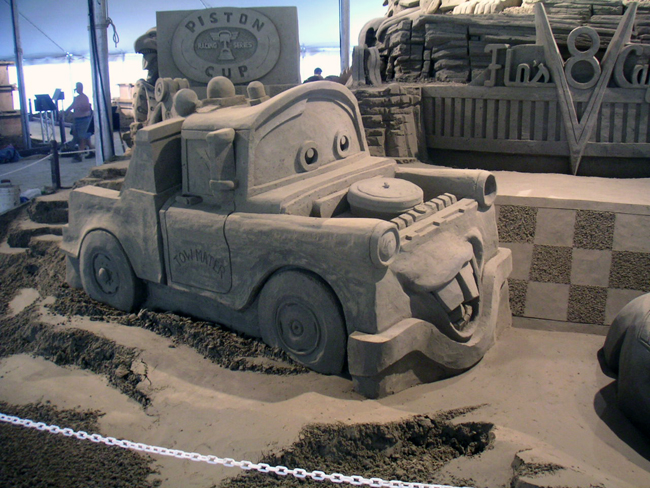
Collapse, Velling said, is frequent and you just have to go with the flow, knowing that gravity is working against you.
When a listener asked how he knew when a sand sculpture was finished, Velling replied that he never really finished one; they were abandoned and nature took care of them. Showing a photo of a line of castles getting washed away by the waves, he said that the next day, you wouldn’t even be able to tell where the contest had been.

“To have people around you at the beach is energizing,” Velling said. “It’s like you’re an entertainer there. People want to see you carving. People are in awe that you can make something incredible from something so uneventful.”
Velling also works with clay and bronze and practices with sand in his own sandbox at home.
